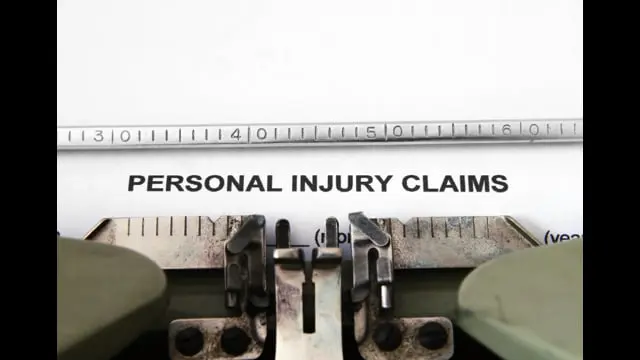When facing arrest, the prospect of spending time in jail can be daunting. However, understanding the proceso de fianza and knowing how to expedite your release can make a significant difference. This article will delve into the intricacies of securing an immediate bail release, providing valuable insights and strategies to help you or your loved ones navigate this challenging situation effectively.
El concepto de fianza is rooted in the principle that individuals are presumed innocent until proven guilty. It allows defendants to be released from custody while awaiting trial, provided they can assure the court of their appearance at future proceedings. The bail system aims to balance public safety concerns with the rights of the accused, ensuring that those who do not pose a significant risk to society can maintain their freedom and prepare for their defense.
In recent years, the bail bond industry has faced scrutiny and calls for reform. Critics argue that the traditional cash bail system disproportionately affects low-income individuals, who may struggle to afford even modest bail amounts. This has led to discussions about alternative methods of pretrial release and risk assessment tools. Despite these ongoing debates, understanding the current bail system and how to navigate it efficiently remains crucial for those seeking immediate release from custody.
Understanding the Bail Process
The bail process typically begins shortly after an arrest. Once a person is taken into custody, they are booked at the local jail or police station. This involves recording personal information, taking fingerprints and photographs, and conducting a background check. After booking, the defendant may have the opportunity to post bail immediately for certain minor offenses. For more serious charges, a bail hearing is usually required.
During a bail hearing, a judge considers several factors to determine whether to grant bail and, if so, at what amount. These factors include:
- The nature and severity of the alleged offense
- The defendant’s criminal history and prior record of court appearances
- Ties to the community, including family, employment, and residence
- The potential risk to public safety if the defendant is released
- The likelihood of the defendant appearing for future court dates
Based on these considerations, the judge may set a bail amount, deny bail altogether, or release the defendant on their own recognizance (ROR). If bail is set, the defendant or their representatives must then decide how to secure the funds for release.
Strategies for Expediting Bail Release
When time is of the essence, there are several strategies that can help expedite the bail release process:
- Contact a bail bondsman immediately: A reputable bail bond agent can quickly assess your situation and begin working on your release as soon as possible. Many bail bond companies operate 24/7, understanding the urgency of these situations.
- Gather necessary information: Be prepared to provide the bail bondsman with essential details, including the defendant’s full name, booking number, charges, and the jail where they are being held. Having this information readily available can significantly speed up the process.
- Understand payment options: Bail bond companies typically charge a non-refundable fee, usually 10% of the total bail amount. Discuss payment options upfront, including any potential collateral requirements, to avoid delays.
- Utilize technology: Many jurisdictions now offer online systems for checking inmate status and bail information. Familiarize yourself with these resources to stay informed throughout the process.
- Consider alternative release options: In some cases, it may be possible to secure release through other means, such as citation release or release on own recognizance. Discuss these possibilities with your attorney or bail bondsman.
- Be proactive about court dates: Once released, ensure that all court appearances are attended promptly. This demonstrates responsibility and can positively influence future bail decisions if needed.
The Role of Bail Bondsmen in Expediting Release
Bail bondsmen play a crucial role in facilitating quick releases from custody. These professionals are well-versed in local court systems and have established relationships with jail staff, which can help streamline the process. When you work with a agente de fianzas, you’re leveraging their expertise and connections to expedite your release.
Bail bond agents typically follow these steps to secure a client’s release:
- Initial consultation: The bondsman gathers necessary information about the case and explains the bail process and associated fees.
- Paperwork completion: The agent prepares and files all required documentation with the court and jail.
- Payment arrangement: The client pays the non-refundable premium (usually 10% of the bail amount) and provides any required collateral.
- Posting bail: The bondsman posts the full bail amount with the court, securing the defendant’s release.
- Release coordination: The agent works with jail staff to process the release and provides instructions to the client about next steps and court appearances.
By handling these steps efficiently, a skilled bail bondsman can significantly reduce the time spent in custody. It’s important to choose a reputable and experienced bail bond agency to ensure the smoothest possible process.
Legal Considerations for Expedited Bail Release
While seeking an expedited release is understandable, it’s crucial to navigate the process within the bounds of the law. Here are some important legal considerations to keep in mind:
- Right to counsel: Defendants have the right to legal representation during bail hearings. An attorney can argue for lower bail amounts or alternative release conditions.
- Bail review: If the initial bail amount seems excessive, it may be possible to request a bail review hearing. This allows the defendant to present arguments for a reduced bail amount or alternative release conditions.
- Pretrial services: Many jurisdictions offer pretrial services programs that can assess defendants for release eligibility based on factors other than financial ability.
- Constitutional protections: The Eighth Amendment prohibits excessive bail. If you believe the bail amount is disproportionate to the alleged offense or your circumstances, this may be grounds for appeal.
- Conditions of release: Be aware that bail often comes with specific conditions, such as travel restrictions or mandatory check-ins. Violating these conditions can result in re-arrest and forfeiture of bail.
- Bail source inquiries: In some cases, the court may inquire about the source of bail funds to ensure they are not derived from illegal activities.
Understanding these legal aspects can help you navigate the bail process more effectively and avoid potential pitfalls that could delay your release.
The Impact of Recent Bail Reform Efforts
In recent years, there has been a growing movement towards reforma de la fianza across the United States. These efforts aim to address perceived inequities in the traditional cash bail system and reduce the number of people held in pretrial detention due to inability to pay. While the specifics vary by jurisdiction, some common reform measures include:
- Risk assessment tools: Many jurisdictions are implementing data-driven risk assessment tools to help judges make more informed decisions about pretrial release.
- Elimination of cash bail for certain offenses: Some areas have moved to eliminate cash bail requirements for low-level, non-violent offenses.
- Pretrial services expansion: There’s an increased focus on providing support services to help ensure defendants appear for court dates without the need for financial incentives.
- Judicial discretion: Reforms often aim to give judges more flexibility in setting release conditions based on individual circumstances rather than relying solely on predetermined bail schedules.
These reform efforts can have significant implications for those seeking immediate release. In jurisdictions with active reform measures, you may find additional options for securing release without the need for cash bail or a agente de fianzas. However, it’s important to note that these reforms are not universal and can vary widely between states and even individual counties.
Technological Advancements in the Bail Process
Technology is playing an increasingly important role in modernizing and streamlining the bail process. Some notable advancements include:
- Online bail payment systems: Many jurisdictions now offer the ability to pay bail online, eliminating the need for in-person cash transactions.
- Electronic monitoring: GPS ankle monitors and smartphone apps are being used as alternatives to detention, allowing for release with enhanced supervision.
- Court date reminder systems: Automated text and email reminders help reduce failure-to-appear rates, potentially leading to more lenient bail decisions.
- Virtual bail hearings: Some courts have implemented video conferencing for bail hearings, reducing transportation needs and potentially speeding up the process.
- Bail bond management software: Bail bond agencies are using specialized software to streamline their operations, potentially leading to faster service for clients.
These technological advancements can contribute to a more efficient bail process, potentially reducing the time spent in custody. However, it’s important to be aware that access to these technologies may vary depending on your location and the specific circumstances of your case.
Preparing for Release: Next Steps and Responsibilities
Once you’ve secured your release through bail, it’s crucial to understand your ongoing responsibilities and prepare for the next steps in your case. Here are some key considerations:
- Court appearances: Make note of all scheduled court dates and ensure you attend each one promptly. Failure to appear can result in bail revocation and additional charges.
- Compliance with release conditions: Adhere strictly to any conditions set by the court, such as travel restrictions, drug testing, or check-ins with pretrial services.
- Legal representation: If you haven’t already, secure legal counsel to guide you through the upcoming legal proceedings.
- Document gathering: Begin collecting any documents or evidence that may be relevant to your case.
- Employment and housing stability: Maintaining stable employment and housing can be viewed favorably by the court in future proceedings.
- Substance abuse or mental health treatment: If applicable, voluntarily entering treatment programs can demonstrate a commitment to rehabilitation.
- Communication with your bail bondsman: Keep your bail bond agent informed of any changes in your contact information or status.
By diligently following these steps, you not only ensure compliance with your release conditions but also potentially strengthen your position for future court proceedings.
The Future of Bail and Pretrial Release
As discussions around criminal justice reform continue, the future of bail and pretrial release systems remains a topic of intense debate. Some potential developments to watch for include:
- Increased use of risk assessment tools: More jurisdictions may adopt data-driven approaches to determine release eligibility and conditions.
- Expansion of pretrial services: There may be a greater emphasis on providing support services to help defendants successfully navigate the pretrial period.
- Legislative changes: States and localities may continue to pass laws aimed at reducing reliance on cash bail and addressing perceived inequities in the system.
- Technological integration: Further advancements in technology may lead to more efficient and transparent bail processes.
- Shift towards non-monetary release conditions: There may be a growing trend towards using supervised release programs instead of financial bonds.
- Bail industry adaptation: The traditional bail bond industry may need to evolve and offer new services in response to changing legal landscapes.
While these potential changes could significantly alter the bail landscape in the coming years, the immediate need for understanding and navigating the current system remains crucial for those facing arrest and detention.
Conclusión
Securing an immediate bail release requires a thorough understanding of the bail process, quick action, and often the assistance of experienced professionals. By familiarizing yourself with the strategies and considerations outlined in this article, you’ll be better prepared to navigate this challenging situation effectively.
Remember that while expediting your release is important, it’s equally crucial to ensure that you’re making informed decisions and complying with all legal requirements. Whether you’re working with a bail bondsman, utilizing pretrial services, or exploring alternative release options, staying informed and proactive throughout the process can make a significant difference in the outcome of your case.
As the legal landscape continues to evolve, staying informed about bail reform efforts and new pretrial release options in your jurisdiction can help you make the best decisions for your situation. Ultimately, the goal is not just to secure a quick release but to do so in a way that supports a favorable outcome for your case and respects your rights throughout the legal process.
Website citations used for this article:









